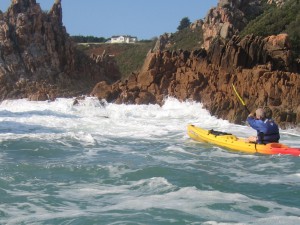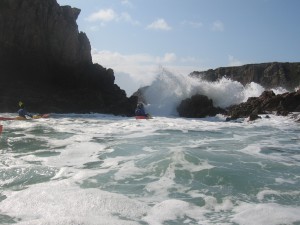Adaptive paddling
Focus on ability and not disability in paddlesport.
Ashley Clare of Battle Back led an inspirational workshop and keynote lecture on adaptive paddling at the Canoe England coaching conference.
A key point is that disability comes in all shapes and forms. What is an issue in one area may not be the case elsewhere.
At some stage all of us will experience an impairment.
As good coaches we need to be able to respond to different students and their needs.
Paddlesport coaches need to consider if it is best to operate an activity as:
- Open to all
- Modified
- Parallel
- Separate
In some case open sessions may pose potential difficulties. I’ve sometimes opted for separate or parallel sessions so we both discovered how things worked out without feeling under pressure from others in the group. In some cases a modified class works better. For instance allowing longer time to kit up and sort kit, or altering the launching point. Or, perhaps run a shorter session.
The key is to discuss and identify what you both hope to achieve.
Be willing to adapt the plans.
Listen to the student, look and observe, ask questions, confirm things, agree a plan.
Ashley demonstrated how you learn a lot by observing how they arrive and move. Through discussion you get a better picture of their motivation for trying paddlesport. This is no diferent to working with any other paddler. We just need to make time to find out things.
Activity modification
What needs to happen for people to do the activity. This may require adjustments to kit, venue, timing of sessions.
Ask the student how they might resolve kit/access issues etc. They usually know best.
Be prepared to improvise with adaptations to kit.
Buy plenty of Gaffa tape and sleeping mat foam. Improvise and pad out kayaks/canoes. Ashley suggested lots of simple solutions.
If you need more back support fold up a sleeping mat to create a back rest. The paddler can take it away with them to use again
Keep a note of your adaptations and ideas so you can use them again. Take a photo of the adaptations so you can give paddlers with an impairment an example.
Photos- check if the person is happy to be in the photo (no different to anyone else being included in a photo)
Balance problems- add out riggers- a broomstick and a couple of foam filled water bottles and taped onto the kayak. You can slide them in closer as balance improves.
Active hands- a product to hold onto paddles better are a great aid.
Use different types of craft -it’s all paddle-sport. Ashley showed lots of examples of using a wide range of kayaks and canoes on the same trip/session. If it works for the paddler use it.
Find out about the person.
Use whatever works.
Try out ideas .
Don’t be afraid to make it up as you go along.
Instead of asking about “special needs”, ask if they require any adaptations to take part.
Remember, the paddler is probably the best person to ask how to resolve an issue. They will often have a pretty good idea of how to adapt things.
Just good coaching practice based on listening to the individual.
Derek


